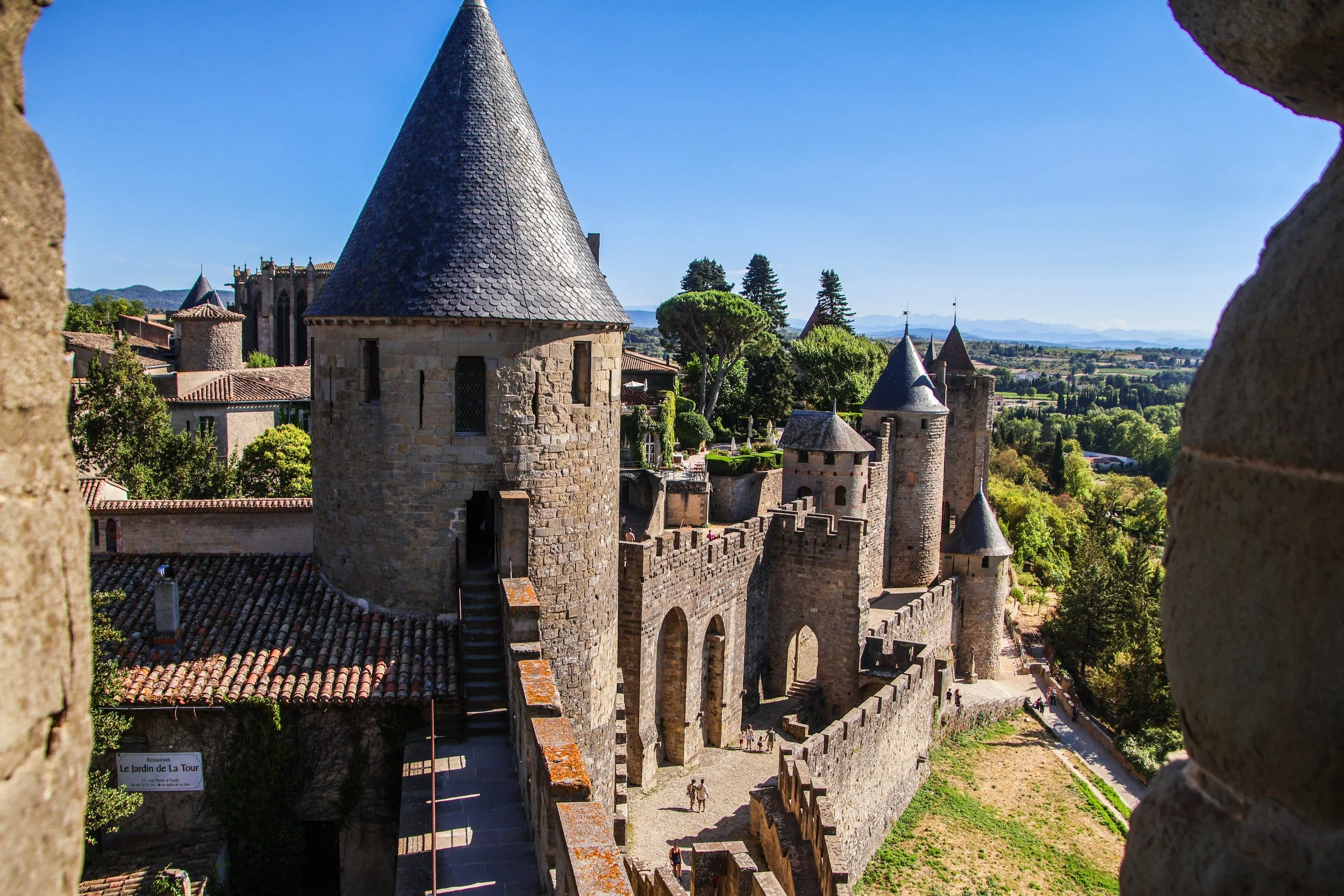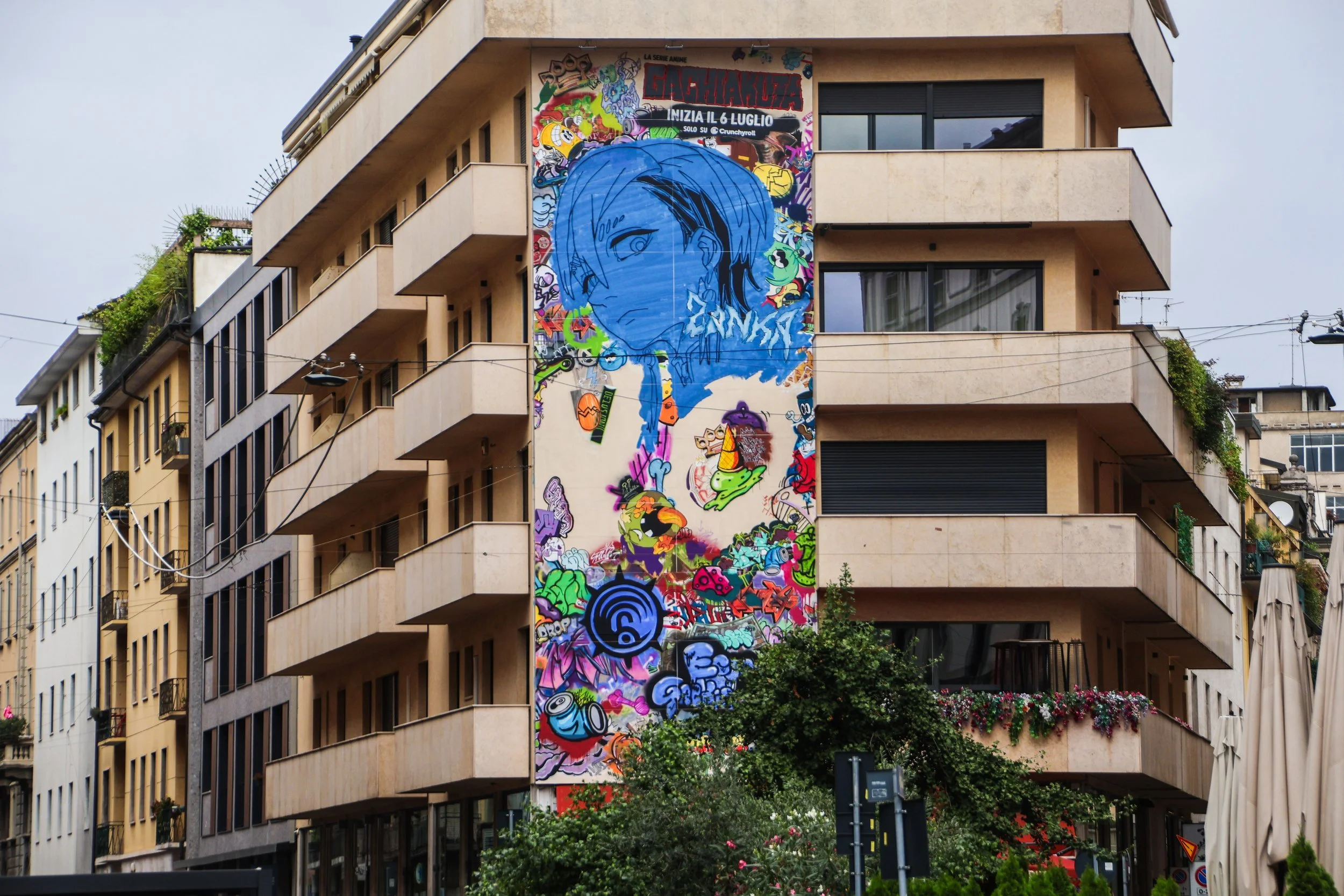And we’re back in France! But rather than continuing our exploration of 21st century France, we’re going to rewind today and visit Medieval France. I’ve never been a fan of Renaissance Faires (actually, I low-key hate them), but this is an undeniably fascinating time in history to learn about. And actually seeing the castles in real life really takes this to the next level! Today we’re visiting two Medieval castles in the South of France: Carcassone and Villerouge-Termenès. Vamos!
Viewing entries in
Europe
And we’re closing our time in Milano with a street art feature! On this trip I did not find nearly the quantity that I have in some of the other articles on street art, but the quality of what I did find was high enough that I decided these murals deserved their own space. That being said, the mural map of Milan that I found on streetartcities.com suggests I may have missed some really good ones along the way, but that’s okay. I’ll be back!
During my first visit to Milan, I had the great privilege of locals taking me under their wing, which is always a game-changer when exploring a new place. Dropping into communities that already exist and riding the coattails of their intuitive understanding of their home really gives you a feel for what life in a place is really like—but it also relieves you of having to think about where exactly you are in the city at any given moment. As a result, you’ll walk away with a strong emotional bond to a city, but not much concrete information about it. That was my challenge in returning to Milan. So I did the legwork of sifting through exactly where I was during my first visit to Milan, and came up withe two neighborhoods that made the biggest impression on me. They were Brera and Navigli. Let’s jump in.
Milan (or, in Italian, Milano) is not a city that is known for its beauty—at least not within Italy. But I never thought this was fair. Yes, Milan prioritizes function over form, and is more of an industrial hub than any other city in Italy… but the rest of Italy sets an extremely high bar for what it means to be a ~beautiful city. In most other countries, this would be considered an absolutely gorgeous city, but when you’re competing with Rome, Florence, and Venice… yeah, it’s going to be a losing battle. But comparison is the thief of joy, and Milan is still quite beautiful in its own rite! More to the point; it will give you a better window into what everyday life looks like for Italians much better than Venice or Florence ever could. This is real life, and—to me—real life in Milan looks pretty damn good.
Duomo di Milano is arguably the center piece of Milan, and the plaza bearing its name—Piazza del Duomo—sits at the center of “Central Milan”. We’ll branch out to other parts of the city in forthcoming articles, but today, we’re only going to focus on the comings and goings of this little area.
As we all know, the streets of Paris are famously beautiful. But what you might not know is that just a few meters below these charming bistros and boulevards lays hidden a labyrinth of dark tunnels containing somewhere in the vicinity of 6 to 7 MILLION skeletons. These are the catacombs of Paris, and today—in the spirit of Halloween—we’re going down there. 🎃
It’s a bit hard for me to disentangle Oxford the school from Oxford the town. They are inextricably linked and have developed co-dependently throughout the centuries. The University of Oxford was actually founded in 1096. 🤯 This is so long ago that the exact date is actually unknown! To give you a bit of perspective, that makes Oxford older than the Aztec Empire, Genghis Khan’s founding of the Mongol Empire, Kublai Khan’s founding the Yuan dynasty in China, The Crusades (which saw the sacking of Constantinople), and the Magna Carta.
We’ll pick up where left off at the end of the previous article on Hondarribia: on the ferry across the Bay of Txingudi, crossing from the Spanish side of Basque Country, to the French side. Our destination today is a little town called Hendaye. Pretty much the ONLY thing I knew about Hendaye when I arrived here was that is was Basque. I had long been fascinated with Basque Country, but had only ever thought about it through a Spanish context. This, however, is an incomplete picture of the Basque culture, because it actually straddles this international border in the Bay of Biscay. Both sides deserve thorough exploration… and as far as the French side is concerned… this ain’t it. Admittedly, it’s not the deepest incursion into French Basque Country, but it will hopefully provide a feel for the area.
Hondarribia is a beautiful little town that sits on the Spanish side of the Bidasoa river, which form the border between France and Spain in the Bay of Biscay. The estuary that forms here, where the Bidasoa river meets the Atlantic is called the Bay of Txingudi. So, when you look across the water from Hondarribia, you are looking into France. At the end of this article, we’re going to cross the river (spoiler!), but before we do that, we’ll explore this last outpost of Spanish Basque Country.
The Basques (also known as Euskaldunak) are an ethnic group with their own culture and language whose historical home straddles the Pyrenees mountains, occupying northern Spain and southwestern France.
What makes the Basques so intriguing? Let’s start with language. I’m sure you’ve heard of some of the major language families, such as Romance Languages (e.g. Spanish, French, Italian, Portuguese), Germanic Languages (e.g. English, German, Dutch, Swedish), and Slavic Languages (e.g. Russian, Polish, Czech, Serbian). These are groups of related languages that all evolved from a common ancestral language. In fact, languages all over the world can mostly be grouped into “families”… but Basque (Euskara) doesn’t fit into any of them. It is a language isolate, meaning that is bears no relationship at all to any other surviving language. Its origins are utterly mysterious, and the culture it belongs to… oh boy.
By the time the urban footprint of London really began to expand in the 18th century, Hampstead Village had become kind of a trendy place to be for Londons affluent intelligentsia, since it was beautiful, clean, and within striking distance of London. Likewise, the giant natural area now known as Hampstead Heath—which served as a shared backyard for this community—became the focal point of conservation efforts in the face of London’s creeping urban sprawl. Luckily, Hampstead already boasted an impressive roster of rich and influential residents who had the muscle to bring this conservation to reality. The result? Both Hampstead Village & Heath have grown into the stuff of postcards; a beautiful and secluded getaway from the hustle and bustle of London.











